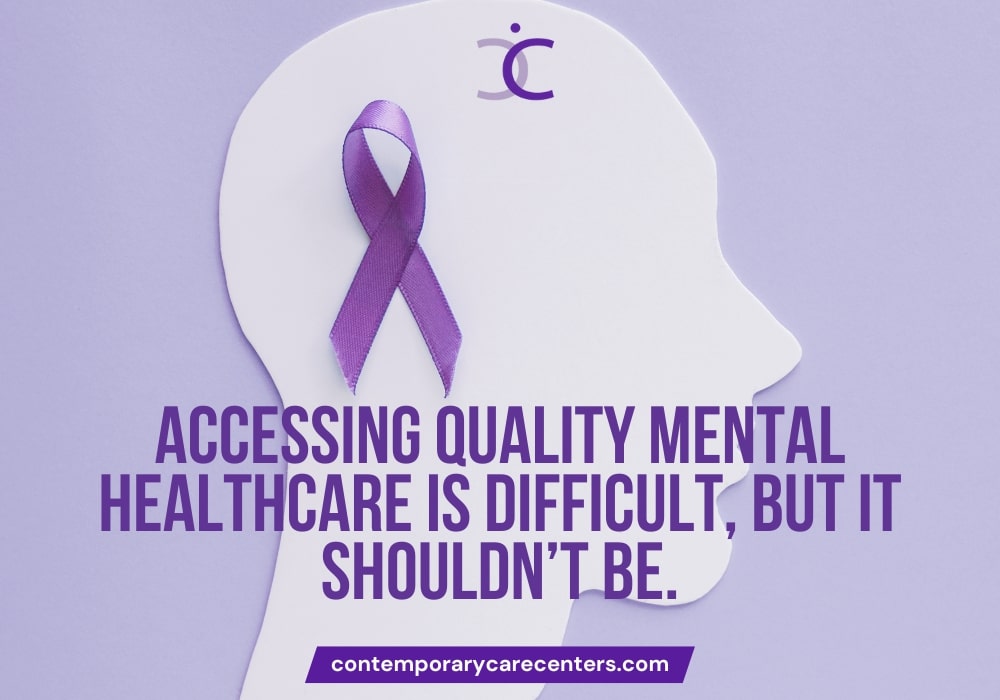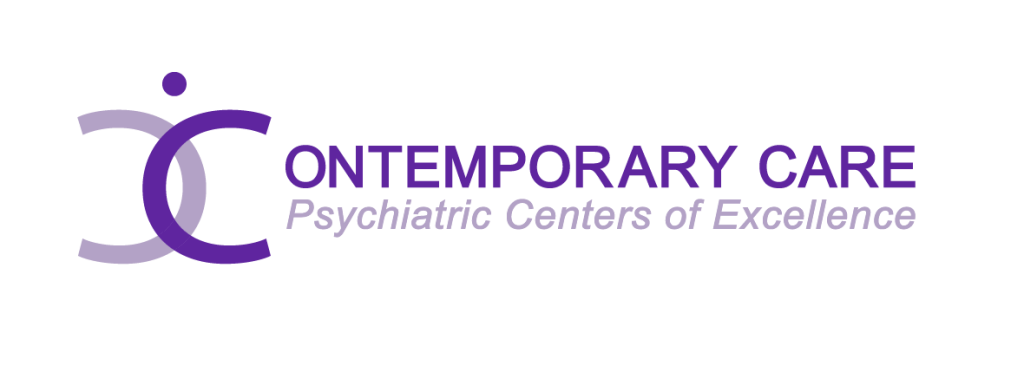Are you searching for a way to escape the weight of depression? Discover how TMS therapy work can light a spark of hope in your healing journey.
Transcranial Magnetic Stimulation (TMS) therapy is a groundbreaking approach to treating mental health disorders. TMS stimulates nerve cells in targeted brain areas using magnetic pulses, especially for conditions like major depressive disorder.
Understanding how TMS therapy works can provide insight into its effectiveness and benefits. This innovative technique offers hope for those facing treatment-resistant depression and other mental health challenges
What is TMS Therapy, and How Does TMS Therapy Work?
TMS therapy uses magnetic pulses to target specific brain regions, stimulating activity and helping relieve depression symptoms.
TMS therapy is a non-invasive treatment for major depressive disorder. TMS therapy works by a fascinating process that harnesses magnetic energy to influence brain activity. This treatment’s core is a magnetic coil that produces strong magnetic fields. When placed on the scalp, this coil delivers pulses that penetrate the brain tissue directly beneath it.
Targeting Specific Brain Regions
The primary target for TMS is the left dorsolateral prefrontal cortex, a region critical for mood regulation. This area often exhibits reduced activity in individuals experiencing major depressive disorder. Stimulating this brain area boosts activity, helping to reduce depression symptoms.
The Process of Stimulation
Patients sit comfortably during a typical TMS session while the machine is over their heads. The treatment lasts 20 to 40 minutes, and patients are awake throughout. Patients feel a gentle tapping sensation on their scalps as the magnetic pulses are delivered.
These magnetic pulses create small electrical currents that activate nerve cells in the targeted area. This stimulation helps restore normal brain function, improving mood and emotional stability.
This technique differs from traditional treatments, such as electroconvulsive therapy, which can involve more invasive procedures and anesthesia.
How Does TMS Therapy Impact the Brain’s Neural Pathways?
TMS helps reset brain chemistry, enhancing mood and focus by activating underactive areas.
This innovative treatment interacts directly with neurons, stimulating them to improve communication within the brain. When delivered, magnetic pulses target specific prefrontal cortex regions crucial for regulating emotions. This stimulation strengthens neural pathways, promoting healthier brain function and reducing depression symptoms.
As a result, many patients experience improved emotional stability and greater clarity of thought. TMS has shown promise in addressing various mental health conditions, including bipolar disorder and obsessive-compulsive disorder (OCD).
Targeting underactive regions helps individuals regain control over their mental health. This non-invasive procedure represents a significant advancement in treating conditions that often resist traditional methods. Overall, TMS therapy offers a new path to healing by positively influencing the brain’s neural pathways.
What are the Mechanisms Behind TMS Therapy?
Understanding the science behind TMS reveals its effectiveness in altering brain function.
Let’s explore the electromagnetic principles and how they stimulate neural activity.
Electromagnetic Principles
TMS generates strong magnetic fields that penetrate the skull without causing discomfort. These fields create electrical currents in specific brain regions, particularly the prefrontal cortex.
Stimulating Neural Activity
This therapy stimulates nerve cells, increasing activity and enhancing communication between brain areas. TMS helps restore balance in brain chemistry, reducing symptoms of major depressive disorder.
Impact on Mental Health
Patients often report improved mood and emotional stability after several TMS sessions. This therapy shows promise in addressing bipolar disorder, obsessive-compulsive disorder (OCD), and other mental health challenges.
Why is TMS Therapy Considered Safe and Non-Invasive?
TMS is non-surgical and uses targeted magnetic fields, avoiding the need for anesthesia or downtime.
Key Safety Features
TMS does not involve any surgical procedures or incisions. Most patients only experience mild side effects, such as temporary headaches.
Convenient Treatment
Patients remain awake and alert during the entire treatment session. Each TMS session typically lasts 20 to 40 minutes, allowing easy scheduling.
Comparison to Other Treatments
TMS does not require hospitalization or extensive recovery time, unlike electroconvulsive therapy. It is effective for treating major depressive disorder, bipolar disorder, and obsessive-compulsive disorder (OCD).
TMS therapy’s safety and non-invasive nature make it a preferred alternative to more invasive procedures for mental health treatment.
What are the Typical Side Effects and Risks of TMS Therapy?
TMS therapy is generally well-tolerated, but understanding potential side effects is crucial.
Let’s explore the potential side effects of TMS therapy:
- Mild Headaches: Temporary headaches are the most common side effect, often easing after the first few sessions.
- Scalp Discomfort: Patients may feel mild discomfort or tingling at the treatment site, usually fading quickly.
- Facial Twitching: Some patients notice brief, mild muscle cramps in the face during sessions, which are generally harmless.
- Lightheadedness: Occasionally, patients feel lightheaded during or after treatment, though this usually passes quickly.
- Hearing Sensitivity: The sound of magnetic pulses may be loud for some; earplugs are often provided to reduce discomfort.
- Fatigue: Some report feeling slightly tired after sessions, but this effect is usually mild and brief.
- Rare Risks: Although rare, seizures can occur, especially in patients with preexisting conditions.
How Long Does a TMS Therapy Session Last, and What’s the Treatment Schedule?
TMS sessions are typically brief, allowing for flexibility in treatment schedules.
Duration of a TMS Session
Each TMS session lasts 20 to 40 minutes, depending on the treatment plan. Patients remain awake and comfortably seated while the TMS machine directs magnetic pulses to targeted brain areas.
Frequency and Length of Treatment
Patients usually undergo TMS therapy five days a week over four to six weeks for optimal results. This treatment schedule allows brain stimulation to build gradually, effectively addressing symptoms of major depressive disorder and treatment-resistant depression.
Flexibility and Convenience
Sessions are designed to minimize disruption to daily life, as they don’t require anesthesia or recovery time. Patients can resume normal activities immediately, making TMS convenient for busy schedules.
What Should Patients Expect During Their First TMS Therapy Session?
Preparing for your first session can ease anxiety and improve the overall experience.
Initial Consultation and Preparation
- Review of Medical History: The doctor will review your medical history, checking for implanted medical devices or conditions that could affect TMS therapy.
- Motor Threshold Test: To customize treatment, the practitioner determines your motor threshold, or the magnetic strength needed to stimulate nerve cells effectively.
Getting Comfortable for Treatment
- Seated Position: Patients sit comfortably in a chair, remaining awake and relaxed throughout the session.
- Positioning of the TMS Machine: The TMS coil is positioned over the left dorsolateral prefrontal cortex to target areas responsible for mood regulation.
- Sensation of Magnetic Pulses: A light tapping sensation on the scalp is normal as magnetic pulses stimulate specific brain regions.
Duration and Immediate Post-Session
- Session Length: Your first session may take 30 to 40 minutes, slightly longer to allow for motor threshold testing.
- After the Session: Most patients experience mild side effects, like temporary scalp discomfort or lightheadedness, which typically subside quickly.
FAQs
What mental health conditions can TMS therapy treat?
TMS therapy is effective for major depressive disorder, obsessive-compulsive disorder, and sometimes bipolar depression and chronic pain.
Can TMS therapy help if antidepressants haven’t worked?
Yes, TMS therapy is often recommended for patients with treatment-resistant depression where medication alone hasn’t been effective.
How does TMS therapy target specific brain areas?
TMS uses a magnetic coil to deliver pulses that stimulate specific brain regions associated with mood and mental health.
Is TMS therapy painful?
Most patients report only a mild tapping sensation on the scalp during TMS sessions, with no significant discomfort.
Do patients need to adjust their daily routines for TMS therapy?
TMS therapy requires no recovery time so patients can continue their regular activities immediately after each session.

Embrace a Brighter Tomorrow: Your Mental Health Journey Starts Here!
At Contemporary Care Centers, we are dedicated to transforming lives through comprehensive mental health services tailored to your unique needs. Our expert team provides a range of treatments, including cutting-edge TMS Therapy, Spravato (esketamine) therapy, and personalized medication management.
We also offer empathetic counseling and telehealth services, ensuring accessible care wherever you are. If you’re facing challenges with depression, anxiety, ADHD, or other mental health concerns, we’re here to support your recovery.
Take the first step toward a brighter future today! Schedule your appointment today and experience our compassionate approach to mental wellness. Let us help you reclaim your life and achieve your goals. Contact us now and discover why we are a leading choice for mental health care in the tri-state area!




